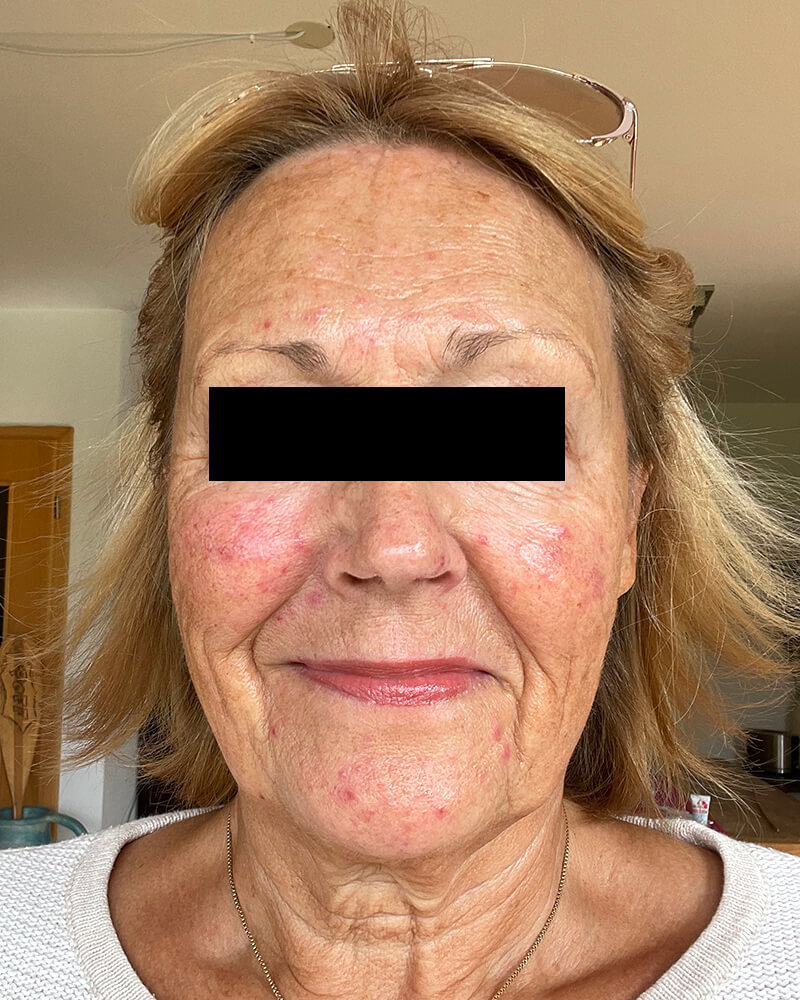 As we age, our skin undergoes a series of changes and our risk increases for conditions like wrinkles, dry skin and rosacea. Most people with rosacea report their first symptoms appearing in their 30s, 40s or 50s. For women in particular, the changes in estrogen can contribute to diminished skin health and appearance. A new study by researchers at Sichuan University in Chengdu, China found that a woman’s age at the time of rosacea diagnosis may impact which signs and symptoms are most prominent and which trigger factors are most common.
As we age, our skin undergoes a series of changes and our risk increases for conditions like wrinkles, dry skin and rosacea. Most people with rosacea report their first symptoms appearing in their 30s, 40s or 50s. For women in particular, the changes in estrogen can contribute to diminished skin health and appearance. A new study by researchers at Sichuan University in Chengdu, China found that a woman’s age at the time of rosacea diagnosis may impact which signs and symptoms are most prominent and which trigger factors are most common.
The retrospective study included 840 women with dermatologist-diagnosed rosacea. Study participants were categorized into three groups by age of diagnosis, loosely aligned with the estrogen levels that occur during the lifecycle of adult women: 30 and under (peak estrogen), 31-44 (stable estrogen), 45 and older (decreasing estrogen).
The researchers found that the incidence of visible blood vessels (telangiectasia) was greater and more severe for the 45 and older group. In addition, persistent redness (erythema) was more severe for women in this age group, and they were more prone to experience itching and swelling as uncomfortable symptoms than the younger groups. Patients over 45 also had a greater probability of rosacea affecting their eyes.
These findings may not be surprising, since rosacea is a chronic condition and may become progressively more severe without medical help. In an NRS survey of more than 2,000 rosacea patients, 26% reported that early symptoms advanced within a few months to middle-stage rosacea, in which the redness becomes more severe and persistent, sometimes with tiny visible blood vessels and often with the appearance of bumps and pimples. For 23% of respondents, early symptoms advanced to middle stage within a year. It’s important to seek treatment early and find a treatment regimen that can keep flare-ups at bay and decrease inflammation.
The 31–44-year-old group in the study was found to have an increased occurrence of flushing and severity of that flushing. But when looking at common trigger factors, the middle-aged and older adults (≥45 years) were relatively less affected by some of the influencing factors, such as emotional changes, hot environments, spicy food, and sun exposure.
The results of this study suggest that the clinical characteristics of rosacea may be more complex and more difficult to treat in women over the age of 45. The researchers noted that they did not collect information on the subject's menstrual cycle, and said further study is needed to determine if a decrease in estrogen is indeed responsible for the differences found between age groups.
Reference:
Yang F, Wang L, Shucheng H, Jiang X. Differences in clinical characteristics of rosacea across age groups: a retrospective study of 840 female patients. J Cosmet Dermatol Published online October 13, 2022. doi:10.1111/jocd.15470